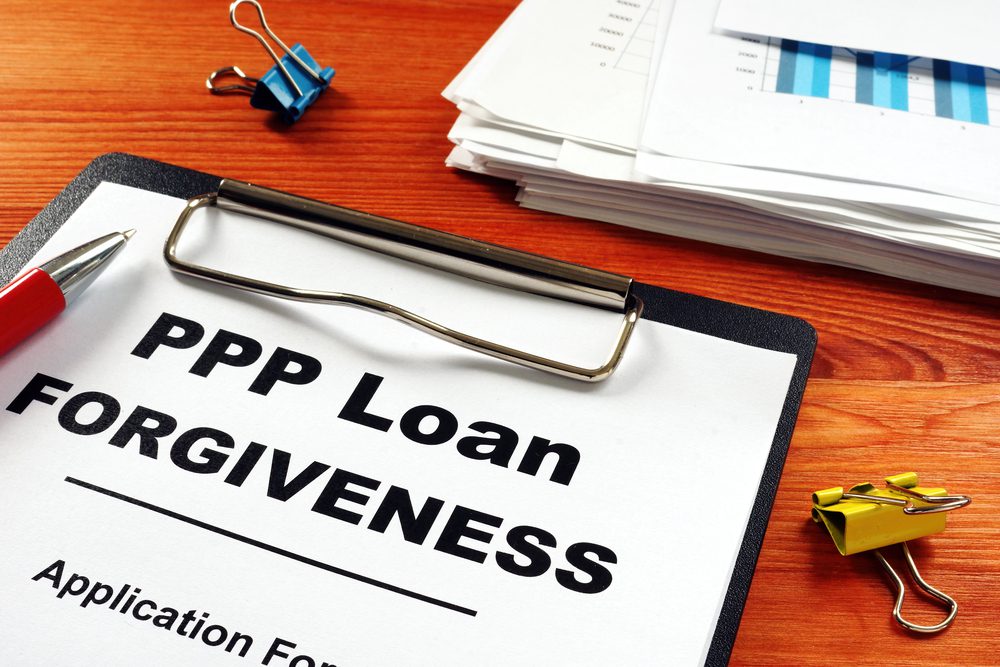PPP Loan Forgiveness

Dear Clients and Friends,
We have been asked a lot of questions lately about all the uncertainty pertaining to your Paycheck Protection Program (PPP) loan, and as ever we are here to help you try to make sense of it all. The PPP has funded over 5.2 million loans amounting to a total of $525 billion. But nearly two months after it stopped accepting new applications on August 8, there are still uncertainties about how many and how much of these loans will be forgiven and under what terms.
So, what do we know?
There is speculation that Congress will streamline the forgiveness process for loans under $150,000, effectively allowing such loans blanket forgiveness. This has yet to be confirmed, so we recommend not to rush your forgiveness application until more information is available, and to keep detailed records as we previously highlighted, of all relevant cashflow. While there is no set deadline for filing, payments on any unforgivable amounts will be required 10 months after the end of the following covered periods:
- For loans funded before June 5, 2020, borrowers can either stick with the original period of 8 weeks or move to 24 weeks.
- For loans funded after that date, the 24-week period applies automatically.
Another big uncertainty around PPP has been the deductibility of expenses and whether you can have your PPP cake and eat it too. While the AICPA and other organizations have urged Congress to make PPP-related business expenses fully deductible, the IRS’s position is that since the loan is not taxable income, and the amounts of eligible expenses will be fully forgiven, deductibility would amount to “double dipping.” So, our working assumption has to be that expenses will not be tax deductible.
On that basis, we understand the predicament faced by our fiscal year-end clients that received a PPP loan and are filing their returns before their covered period ends. So, should they withhold deductions on the assumption that their loan will be forgiven, or go ahead and deduct those expenses on the grounds that they don’t know yet? The IRS’s current guidance is that if taxpayers have a reasonable expectation that the loan will be forgiven, they should not deduct the related expenses. If it later transpires that the loan is not fully forgiven, they can deduct the unforgiven portion in the next fiscal year.
We previously discussed details on the compensation limitation amounts for owner-employees of C or S corporation. It is important to note that owner-employees have now been defined as those with a stake of 5% or more ownership in their respective corporations.
Food for thought: Tax Planning Advice Pertaining to PPP
Despite the uncertainties, and the potential non-deductibility of PPP-related expenses, there are a number of other opportunities available to help reduce your tax liability. Some tax planning strategies to consider:
- Utilizing Net Operating Loss (NOL) carry-backs as the CARES Act effectively limited restrictions on them until end of 2020;
- Preforming a cost segregation study to accelerate the depreciation of Qualified Improvement Property (QIP); or
- Re-evaluating your retirement contribution strategy to determine whether a pre- or post-tax contribution is most advantageous, and how to best leverage that while maximizing the 20% Qualified Business Income deduction.
In conclusion, 2020 is going to be a tough year when it comes to tax planning for many business owners, with an alphabet soup of three-letter acronyms to take into consideration. It might not be as easy as ABC, but help is at hand. As your trusted advisors, we understand that no two businesses are alike, and we are here to help you identify the best strategy for your business to help you attain financial success.
Stay safe and healthy,
The CJBS team.

